Huawei Technologies C5120 CDMA 1X Digital Mobile Phone User Manual C5120 User Guide7 15
Huawei Technologies Co.,Ltd CDMA 1X Digital Mobile Phone C5120 User Guide7 15
User Guide
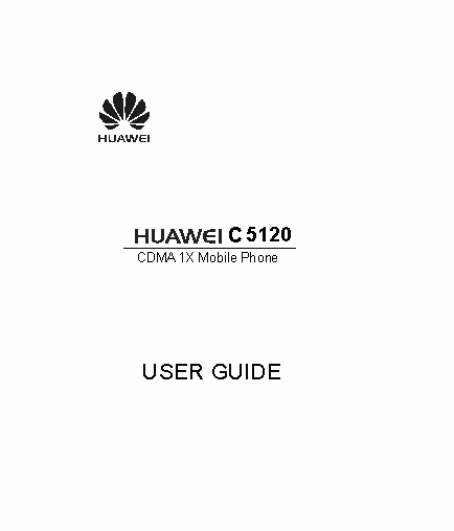

Copyright © Huawei Technologies Co., Ltd.
2010. All rights reserved.
No part of this document may be reproduced or transmitted in any form or
by any means without prior written consent of Huawei Technologies Co.,
Ltd.
The product described in this manual may include copyrighted software of
Huawei Technologies Co., Ltd and possible licensors. Customers shall not
in any manner reproduce, distribute, modify, decompile, disassemble,
decrypt, extract, reverse engineer, lease, assign, or sublicense the said
software, unless such restrictions are prohibited by applicable laws or such
actions are approved by respective copyright holders under licenses.
Trademarks and Permissions
, HUAWEI, and are trademarks or registered trademarks of
Huawei Technologies Co., Ltd.
Other trademarks, product, service and company names mentioned are the
property of their respective owners.
Notice
Some features of the product and its accessories described herein rely on
the software installed, capacities and settings of local network, and may
not be activated or may be limited by local network operators or network
service providers, thus the descriptions herein may not exactly match the
product or its accessories you purchase.
Huawei Technologies Co., Ltd reserves the right to change or modify any
information or specifications contained in this manual without prior notice
or obligation.
NO WARRANTY
THE CONTENTS OF THIS MANUAL ARE PROVIDED “AS IS”.
EXCEPT AS REQUIRED BY APPLICABLE LAWS, NO WARRANTIES
OF ANY KIND, EITHER EXPRESS OR IMPLIED, INCLUDING BUT
NOT LIMITED TO, THE IMPLIED WARRANTIES OF
MERCHANTABILITY AND FITNESS FOR A PARTICULAR PURPOSE,
ARE MADE IN RELATION TO THE ACCURACY, RELIABILITY OR
CONTENTS OF THIS MANUAL.
TO THE MAXIMUM EXTENT PERMITTED BY APPLICABLE LAW,
IN NO CASE SHALL HUAWEI TECHNOLOGIES CO., LTD BE
LIABLE FOR ANY SPECIAL, INCIDENTAL, INDIRECT, OR
CONSEQUENTIAL DAMAGES, OR LOST PROFITS, BUSINESS,
REVENUE, DATA, GOODWILL OR ANTICIPATED SAVINGS.
Import and Export Regulations
Customers shall comply with all applicable export or import laws and
regulations and will obtain all necessary governmental permits and licenses
in order to export, re-export or import the product mentioned in this
manual including the software and technical data therein.
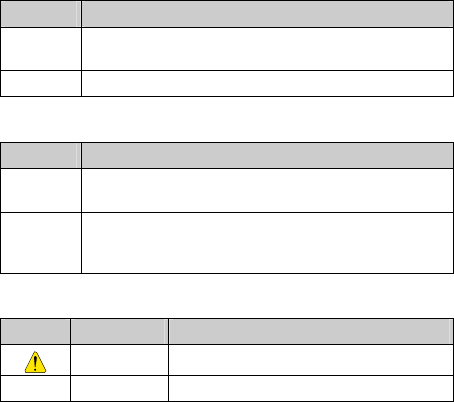
i
Conventions
Term Conventions
This manual refers to HUAWEI C5600 CDMA 1X mobile phone as "the
phone" or "your phone".
Operation Conventions
Operation Meaning
Press and
hold Press a key for two to three seconds and then release it.
Press Press a key and release it quickly.
GUI Conventions
Format Meaning
Bold Any string displayed on the phone screen is in boldface,
such as "Menu".
> Multi-level menus are spearated by ">". For example,
"Menu > Messages" indicates "Messages" is the submenu
of "Menu".
Symbols
Symbol Description Meaning
Caution Warnings and precautions for operations
Note Complementary descriptions for operations
ii
Contents
1 Getting to Know Your Phone............................................1
Your Phone...........................................................................................1
Keys and Functions..............................................................................3
Interfaces..............................................................................................5
Screen Display .....................................................................................6
Screen Icons.........................................................................................6
2 Getting Started...................................................................8
Installing the UIM Card and Battery ...................................................8
Installing the MicroSD Card................................................................8
Charging the Battery............................................................................9
Powering On/Off the Phone...............................................................10
Using a Function Menu......................................................................10
3 Voice Services...................................................................11
Making a Call.....................................................................................11
Answering a Call................................................................................12
Operations During a Call ...................................................................13
4 Text Entry.........................................................................14
Text Input Modes ...............................................................................14
Entering English.................................................................................14
Entering Numbers ..............................................................................16
Entering Symbols...............................................................................16
iii
5 SMS...................................................................................17
Writing and Sending a Text Message ................................................17
Reading a Text Message ....................................................................18
6 MMS..................................................................................20
Writing and Sending a Multimedia Message.....................................20
Receiving a Multimedia Message......................................................20
Viewing a Multimedia Message ........................................................21
7 Contacts ............................................................................22
Adding a Contact ...............................................................................22
Searching for a Contact......................................................................22
8 Music.................................................................................24
Adding the Playlist.............................................................................24
Playing Music ....................................................................................25
Setting the Playing Mode and Effect.................................................26
9 Video Player......................................................................27
Selecting a Video File ........................................................................27
Playing a Video File...........................................................................27
10 Camera............................................................................29
Taking a Photo ...................................................................................29
Viewing a Photo.................................................................................31
11 Recorder..........................................................................33
Recording a Sound Clip.....................................................................33
iv
Playing a Sound Clip .........................................................................33
12 Radio ...............................................................................35
Switching On/Off the FM Radio .......................................................35
13 Alarm Clock....................................................................37
Enabling an Alarm Clock...................................................................37
Disabling an Alarm Clock..................................................................37
14 Security ...........................................................................39
Enabling/Disabling the Phone Lock ..................................................39
Changing the Phone Lock Code ........................................................39
Locking the Keypad...........................................................................40
15 USB Connection .............................................................41
Network Access Through a Dial-Up Connection..............................41
USB Flash Drive Mode......................................................................42
16 Troubleshooting .............................................................43
17 Warnings and Precautions ............................................45
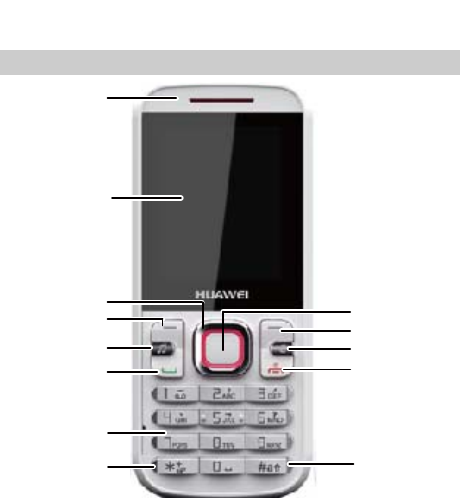
1
1 Getting to Know Your Phone
Your Phone
Earpiece
Screen
Left Soft Key
#Key
*Key
Number Keys
Talk/SendKey
Media Key
Navigation Keys
Right Soft Key
Delete Key
End / Power Key
Confirm Key
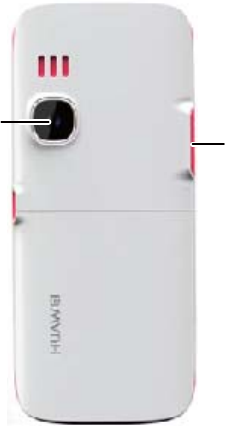
2
Camera Micro SD
Slot
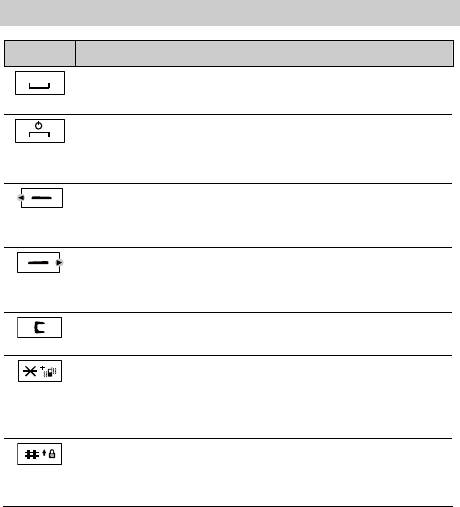
3
Keys and Functions
Press… To…
z View the call log in standby mode.
z Make a call or answer an incoming call.
z Power on or off the phone (by pressing and holding it).
z End a call or reject an incoming call.
z Return to the standby mode.
(Left)
z Select the option displayed in the lower left corner of the
screen.
z Display Menu in standby mode.
(Right)
z Select the option displayed in the lower right corner of the
screen.
z Display Contacts in standby mode.
Delete a character in editing mode or delete a selected item
in an application.
z Enter *, +, P, or T by pressing it once, twice, three times,
or four times.
z Switch between the Meeting profile and the current
profile (by pressing and holding it).
z Enter #.
z Lock the keypad (by pressing and holding it).
z Change the text input mode when editing text.
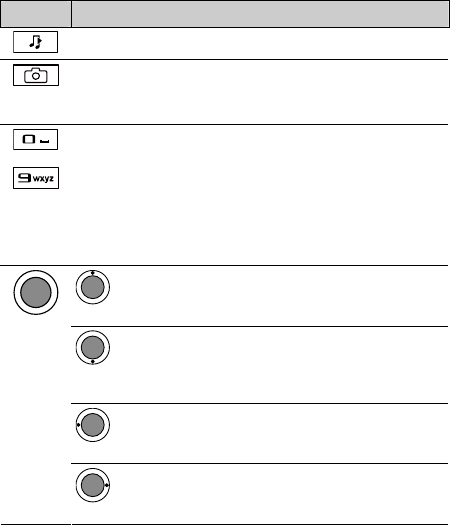
4
Press… To…
Display Media Player in standby mode.
z Launch the camera in standby mode (by pressing and
holding it).
z Take a photo after the camera is launched.
…
z Enter numbers, letters, and symbols.
z Call the voice mail center in standby mode (by pressing
and holding the 1 key).
z Speed-dial phone numbers in standby mode (by pressing
and holding the 2–9 keys).
z Select a submenu item labeled with the corresponding
number.
: Access Profiles in standby mode; increase the volume
during a call.
: Access Messages or access Create Message (by
pressing and holding it) in standby mode; decrease the
volume during a call.
: Access Scheduler in standby mode; decrease the
volume during a call.
: Access Radio in standby mode; increase the volume
during a call.
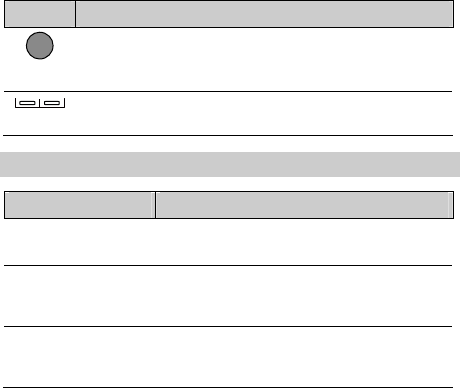
5
Press… To…
z Access Gallery or access WAP (by pressing and holding
it) in standby mode.
z Confirm a selection.
Adjust the volume when you use the call functions, media
player, or radio.
Interfaces
Interface Description
Charger interface
/Data cable connector
Located on the right side of the phone. You can
connect the charger or the data cable to it.
Headset jack Located on the top of the phone. You can
connect the headset with the 3.5 mm connector
to it.
MicroSD card slot Located on the left side of the phone. You can
insert a micro Secure Digital (microSD) card
into it.
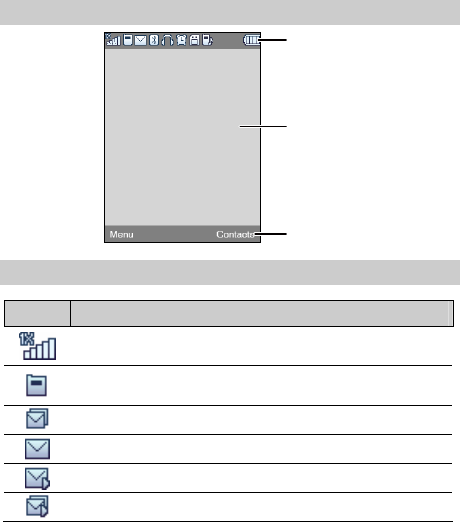
6
Screen Display
Icon ba
r
Desktop
Prompt bar
Screen Icons
Icon Indicates…
Signal strength. The more the bars are, the stronger the signal
is.
There is an incoming call; a call is being set up; there is an
ongoing call.
The SMS inbox is full.
A new text message is received.
A new multimedia message is received.
The MMS inbox is full.
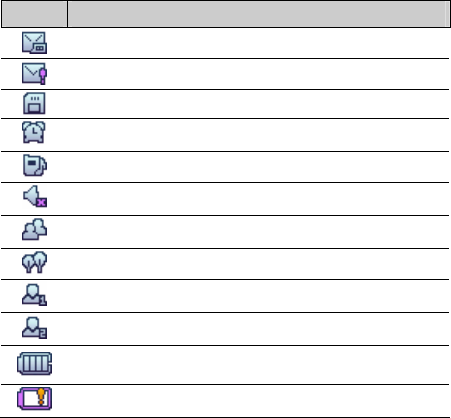
7
Icon Indicates…
A new voice mail is received.
A new emergent message is received.
The microSD card is properly installed.
An alarm clock is enabled.
The General profile is enabled.
The Silence profile is enabled.
The Meeting profile is enabled.
The Outdoor profile is enabled.
The My Profile 1 profile is enabled.
The My Profile 2 profile is enabled.
Battery power level. The more the bars are, the more the
battery power is.
The battery power level is extremely low.
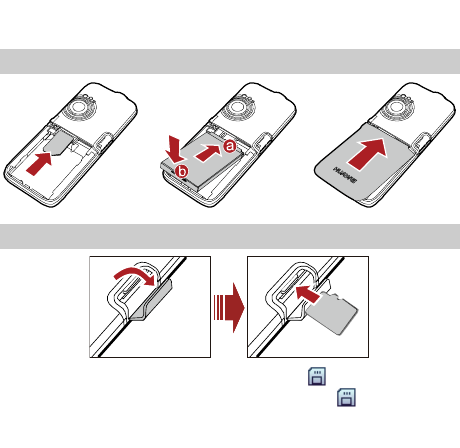
8
2 Getting Started
Installing the UIM Card and Battery
Installing the MicroSD Card
When a microSD card is properly installed, is displayed on the
screen. If you have installed a microSD card but is not
displayed, it indicates that the microSD card is improperly installed
or damaged. Then check your microSD card.
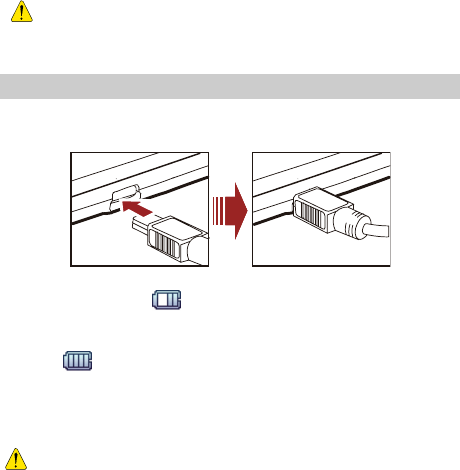
9
z Install the microSD card properly to prevent your phone or
microSD card from being damaged.
z Your phone can work with a microSD card of up to 2 GB.
Charging the Battery
To charge the battery, do as follows:
1. Connect the charger to the charger interface at the bottom of the phone.
2. Connect the charger to an AC power socket.
During the charging, appears in the upper right corner of the
screen in an animated status.
3. Wait until the phone is fully charged.
When becomes static, the battery is fully charged.
4. Disconnect the charger from the AC power socket.
5. Disconnect the charger from the phone.
z Do not use a damaged battery or charger.
z Before charging the battery with the travel charger, ensure
that the battery is installed in your phone.
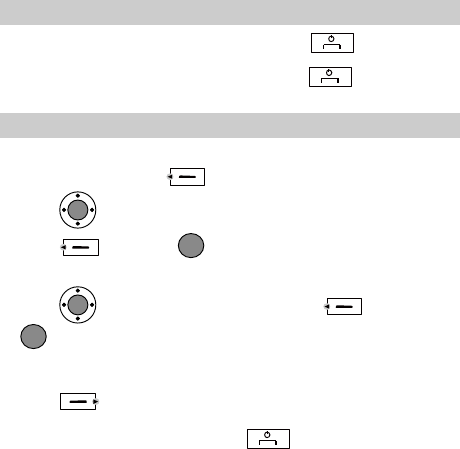
10
Powering On/Off the Phone
z When the phone is powered off, press and hold to power it on.
z When the phone is powered on, press and hold to power it off.
Using a Function Menu
To use a function menu, do as follows:
1. In standby mode, press (Menu).
2. Press to select the desired function menu.
3. Press (Select) or to display the selected menu.
4. Display the submenu in either of the following ways:
z Press to select a submenu, and then press (Select) or
to display the selected submenu.
z Press the number key corresponding to the serial number of a submenu
to display the submenu.
5. Press (Back) to return to the previous menu or exit the function
menu.
To return to the standby mode, press .
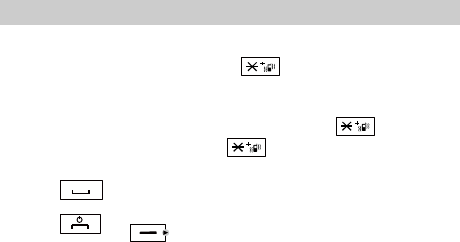
11
3 Voice Services
Making a Call
1. In standby mode, enter the phone number.
z To make an international call, press twice consecutively to enter
a plus sign (+). Then enter the international long-distance code, country
code or region code, area code, and phone number in sequence.
z To call an extension, enter the phone number, press three times
consecutively to insert P or press four times consecutively to
insert T, and then enter the extension number.
2. Press to dial the number.
3. Press or (End) to end the call.
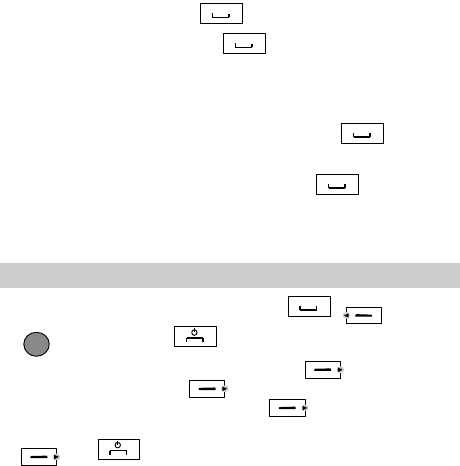
12
z In standby mode, press to select the required number
from All Calls. Then press to dial the number.
z When the phone is locked, enter the lock code to unlock the
phone first; otherwise, you can only make emergency calls or
answer calls.
z Select a contact from the phonebook and press to dial
the number.
z Select a message from the inbox and press to dial the
number.
Answering a Call
When there is an incoming call, you can press , (Answer),
or to answer it; press to reject it.
z When there is an incoming call, you can press (Silence) to mute
the speaker, and then press (Reject) again to reject it. If the
phone is in Silence mode, you can press (Reject) to reject it.
z If the any-key answer function is enabled, you can press any key except
and to answer an incoming call.
z If the headset auto-answer function is enabled and the headset is
connected to the phone, the incoming call is answered automatically.

13
To set the any-key answer function, select Settings > Call
Settings > Answer Mode. To set the headset auto-answer
function, select Settings > Call Settings > Headset Auto
Answer.
Operations During a Call
You can press to enable or disable the speaker, and press
(Options) for the following options:
z Mute/Unmute: allows you to mute or unmute your voice during a call.
When you access the Options menu for the first time, the option is
Mute. If you select it, the other party cannot hear you.
If you access the Options menu again, the option is Unmute. If you
select it, the other party can hear you again.
This function is available only after the call is set up. You cannot
mute/unmute the ringtone.
z Start Record: allows you to record the call. You can select This Side or
The Other Side.
z Save Number: allows you to enter a phone number and save it to the
phonebook.
z Contacts: allows you to search for or create a contact.
z Messages: allows you to access the Messages screen.
z Call Memo: allows you to access the Call Memo screen.
z Voice privacy: allows you to set the privacy mode, including Standard
and Enhanced.
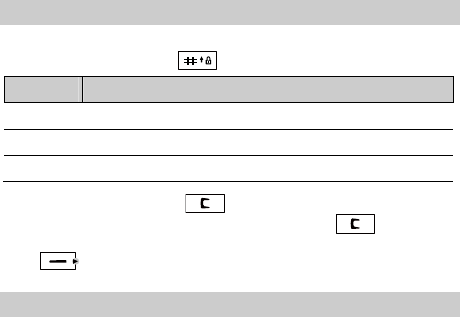
14
4 Text Entry
Text Input Modes
The indicator of the current input mode is displayed in the upper left corner
of the screen. You can press to change the input mode.
Indicator Text Input Mode
En Smart English input mode
Abc Traditional English input mode
123 Number input mode
In editing mode, press once to delete the character on the
left of the cursor. Alternatively, press and hold to clear all
characters at a time. If there is no character to delete, you can press
(Back) to return to the previous menu.
Entering English
Smart English Input Mode (En)
You can enter English letters as follows:
1. Based on the sequence of the word, press the key labeled with the
desired letter once.
Then the phone displays the commonly used words according to the
numeric sequence of key presses.
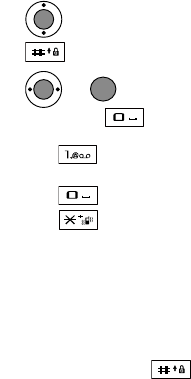
15
2. Press to view alternative words.
3. Press to switch between uppercase and lowercase letters.
4. Press or to confirm the selection.
You can also press to confirm the selection followed by a space.
Traditional English Input Mode (Abc)
The alphabetical text input mode allows you to enter uppercase or
lowercase English letters. You can press the key labeled with the desired
letter once to enter the first letter on the key, twice to enter the second letter
on the key, and so on.
When you enter letters, press to switch between uppercase and
lowercase of the highlighted letter.
z Press to enter a full stop or another commonly used
punctuation.
z Press to enter a space, and press and hold it to enter 0.
z Press to display the symbol list. Then you can select and
enter a symbol.
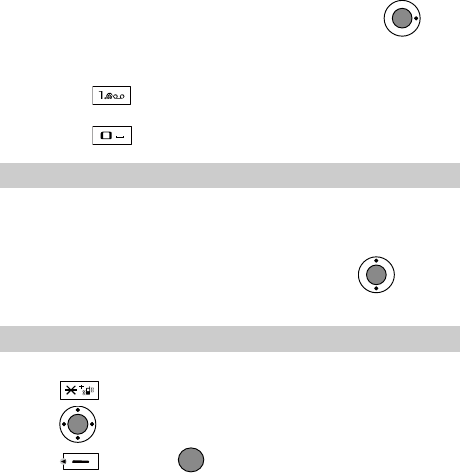
16
If the letter you want to enter is on the same key as the previous one, you
can enter the latter only after the cursor appears again or press to
move the cursor to the next space.
Entering Numbers
z In "123" input mode, press number keys to enter numbers.
z In "Abc" input mode, press a number key consecutively until the
number appears.
z In "En" input mode, press a number key and then press until the
number appears.
Entering Symbols
In any input mode, you can enter a symbol as follows:
1. Press to display a symbol list.
2. Press to select a symbol.
3. Press (Select) or , or press the corresponding number key
to enter the symbol.
z Press consecutively to enter a commonly used
punctuation.
z Press once to enter a space, twice to enter 0.

17
5 SMS
Writing and Sending a Text Message
To write and send a text message, do as follows:
1. Select Menu > Messages > SMS > Create Message.
You can also access the Create Message screen by pressing and holding
in standby mode.
2. Write a text message with up to 160 English letters.
When writing a text message, press (Options) for the following
options:
z Send: allows you to send the message.
z Save: allows you to save the message to Drafts.
z Insert Quick Text: allows you to insert a commonly used phrase.
z Insert Contact: allows you to select a contact from the phonebook and
insert the phone number into the message.
z Insert Special Symbol: allows you to insert a website-related symbol,
such as http://.
z Priority: allows you to set the priority of messages sent to the recipients.
The priorities are Normal, Interactive, Urgent, and Emergency. This
function is network dependent.
z Callback Number: allows you to set the callback number.
The callback number is sent to the message recipient by default. You
can set it to either your phone number or other numbers. When the
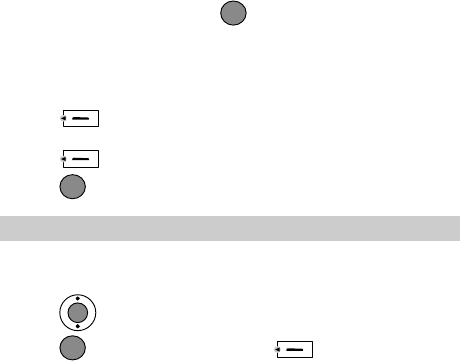
18
recipient receives your message, the callback number can be viewed for
calling you back. Select On and enter the phone number.
3. On the text editing screen, press or select Options > Send.
4. Enter the phone number of a recipient.
Up to 100 recipients can be added by using one of the following
methods:
z Enter the phone number(s) directly.
z Press (Search). Then select Contacts to select the phone
number(s).
z Press (Search). Then select Groups to select a group.
5. Press to send the message.
Reading a Text Message
To read a text message stored in the inbox, do as follows:
1. Select Menu > Messages > SMS > Inbox.
2. Press to select a message.
3. Press to read the message, or press (Options) for the
following options:
z View: allows you to read the message.
z Reply: allows you to edit a message to reply to the message sender.
z Delete: allows you to delete the message.
z Delete Multiple: allows you to delete multiple messages at a time.
19
z Forward: allows you to forward the message.
z Extract Number: allows you to extract the numbers contained in the
message or the number of the message sender. Then you can select Edit
Before Call, Call, or Save.
z Move To Phone/ Move To UIM Card: allows you to move the
message to the phone memory or the UIM card.
z Copy To Phone/Copy To UIM Card: allows you to copy the message
to the phone memory or the UIM card.
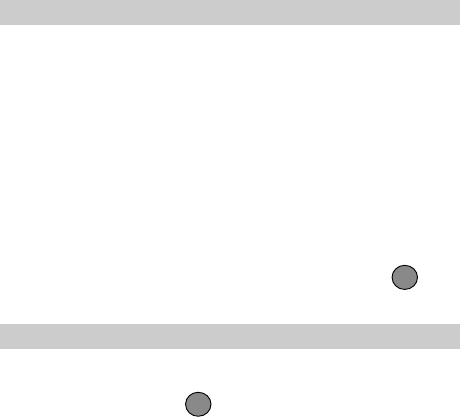
20
6 MMS
Writing and Sending a Multimedia Message
1. Select Menu > Messages > MMS > Create MMS.
2. Edit a multimedia message by setting the following fields:
z Recipient: allows you to enter recipients of the message. You can add
up to 20 recipients.
z Subject: allows you to enter the subject of the message.
z Slide: allows you to insert images, audio files, video files, and texts into
a slide. You can set the duration of displaying each slide for your
preview.
z Timing: allows you to set the duration of switching the slides.
The capacity of a multimedia message can be up to 300 KB,
including the slides.
3. After you write the message, select Options > Send or press to
send it.
Receiving a Multimedia Message
If you select MMS > Settings > Receive options > Download timing >
Manual, a notification is sent to the inbox before you receive a multimedia
message. Then you can press to view the notification and select
Options > Receive to receive the multimedia message.
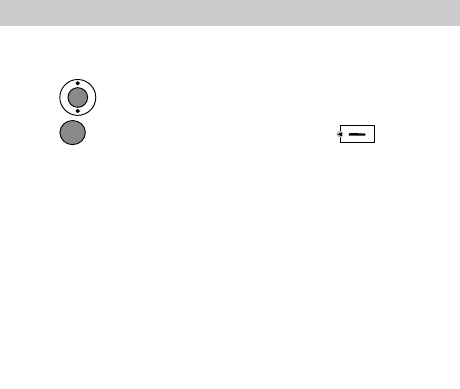
21
If you select MMS > Settings > Receive options > Download timing >
Automatic, the multimedia message is downloaded to the inbox directly.
Viewing a Multimedia Message
To view a multimedia message stored in the inbox, do as follows:
1. Select Menu > Messages > MMS > Inbox.
2. Press to select a message.
3. Press to view details of the message, or press (Options)
for the following options:
z Open: allows you to view details of the message.
z Reply: allows you to reply the message to the message sender.
z Reply all: allows you to reply the messages to the message sender and
all other message recipients.
z Forward: allows you to forward the message.
z Move: allows you to move the message(s) to My folders.
z Delete: allows you to delete the message.
z Delete all: allows you to delete all the messages in the inbox.
z Sort: allows you to sort the messages in the inbox according to Date or
Address.
z Filter view: allows you to specify the message(s) to be viewed.
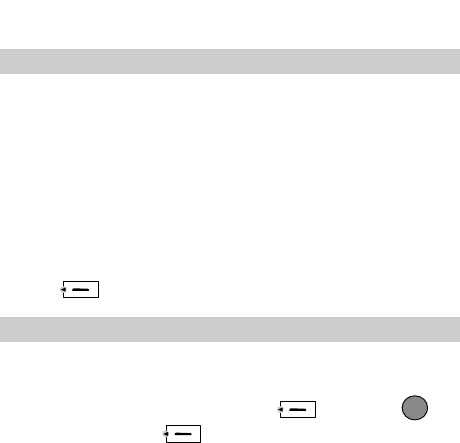
22
7 Contacts
Adding a Contact
To add a contact, do as follows:
1. Select Menu > Contacts > Add New.
2. On the Edit screen, enter the information about the contact.
z If the contact is saved in the phone memory, you can enter information
in the following fields: Name, Mobile Number, Home Number,
Office Number, Fax Number, E-Mail, Group, Notes, Custom Tone,
Custom Image, and URL. (For each contact, at least one number needs
to be entered.)
z If the contact is saved on the UIM card, you can enter information in
only the Name field and the Mobile Number field.
3. Press (Save) to save the contact to the phonebook.
Searching for a Contact
To search for a contact, do as follows:
1. Select Menu > Contacts > Search.
2. Enter the name of the contact. Then press (Search) or .
3. After the search, press (Options) for the following options:
z View: allows you to view details of the contact.
z Edit: allows you to edit the contact.

23
z Add New: allows you to add a new contact.
z Send Message: allows you to edit and send a text or multimedia
message to the contact..
z Delete: allows you to delete the contact.
z Copy To Phone/Copy To UIM Card: allows you to copy the contact to
the phone memory or the UIM card.
z Call: allows you to call the contact.
z Edit Before call: allows you to modify the number before you call it.
z In standby mode, press to access Contacts List.
z To quickly search for a contact, you can press the number key
(except and ) to enter the first letter of the contact
name. Then the phone lists contacts that start with the letter.
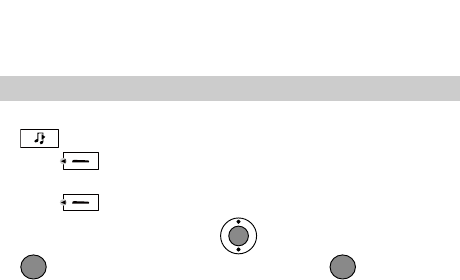
24
8 Music
When you launch the media player for the first time, GUI style
automatically starts. You can select:
z Simple mode: Displays the information of the current song and names
of the previous and next songs.
z Waveform mode: Displays the information and the waveform of the
current song.
z Lyric mode: Displays the information and lyrics of the current song.
To display the lyrics simultaneously, save the lyric file (*.lrc) in the
same directory as the music file, and name the lyric file the same as
the music file.
Adding the Playlist
1. In standby mode, select Menu > Multimedia > Media Player or press
to launch the media player.
2. Press (Options) and select Music Library to set the current
playlist.
3. Press (Options) and select Refresh to refresh the playlist.
4. On the All Tracks screen, press to select a song. Then press
to add the selected song to the playlist. Press again to cancel
the selection.
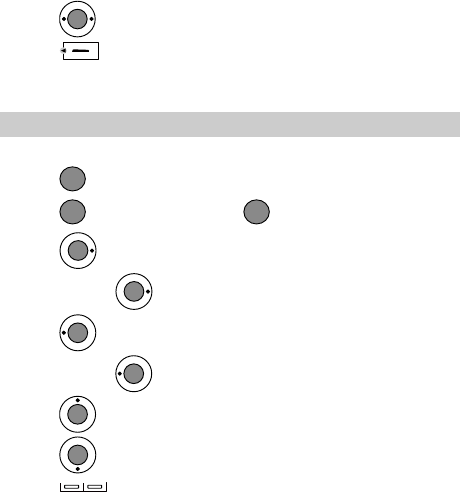
25
5. Press to sort songs by Artists or Albums.
6. Press (Options) and select Play to save and start playing the
playlist, select Add to Playlist to create a new playlist or add songs to
an existing playlist.
Playing Music
On the Media Player screen, you can do as follows:
z Press to play a song.
z Press to pause the song; press again to continue playing.
z Press to play the next song.
z Press and hold to fast forward the song.
z Press to play the previous song.
z Press and hold to rewind the song.
z Press to load the current playlist.
z Press to stop playing.
z Press to increase or decrease the volume.
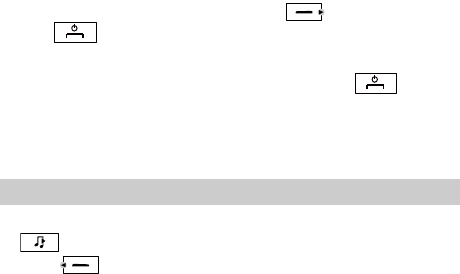
26
z On the Media Player screen, select Options < Off to switch off the
media player.
Setting the Playing Mode and Effect
1. In standby mode, select Menu > Multimedia > Media Player or press
to launch the media player.
2. Press (Options) and select Settings for the following options:
z Equalizer: allows you to set the equalizer.
z Loop: allows you to set the loop mode.
z Shuffle: allows you to enable or disable the shuffle mode.
z GUI style: allows you to select a GUI style that can be Simple Mode,
Waveform Mode, or Lyric Mode.
z When a song is played, you can press (Minimize) or
to hide the Media Player screen. In this case, the media
player is running in the background.
z When the media player is stopped, you can press to
directly exit the media player.
z The media player supports up to 2,000 songs, with 200 in each
playlist.
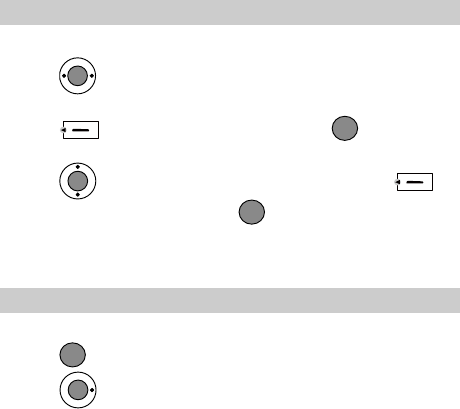
27
9 Video Player
Selecting a Video File
1. In standby mode, select Menu > Gallery > Videos.
2. Press to select the phone or the microSD card as the memory in
use.
3. Press (Options) and select Open, or press to open the
video folder.
4. Press to select the video file to be played. Then press
(Options) and select Play, or press to play the selected video file.
If you want to select a video file from the microSD card, the
microSD card must be inserted into your phone beforehand.
Playing a Video File
On the video player screen, you can do as follows:
z Press to play a video file.
z Press to play the next video file.
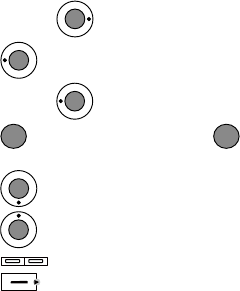
28
z Press and hold to fast forward the video file.
z Press to play the previous video file.
z Press and hold to rewind the video file.
z Press to pause the video file; press again to continue
playing.
z Press to stop playing.
z Press to play the video file in full screen mode.
z Press to increase or decrease the volume.
z Press (Back) to switch off the video player and return to the
previous menu.
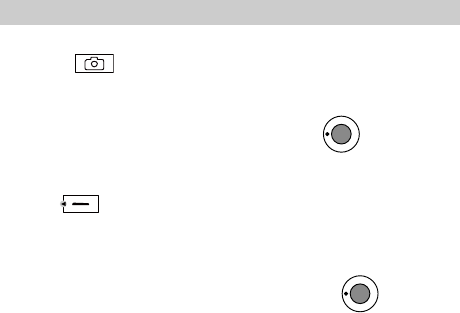
29
10 Camera
Taking a Photo
1. In standby mode, select Menu > Camera to access the preview mode,
or press to launch the camera.
The phone can memorize the screen (camera or video camera
screen) that it displayed last time.
For example, you launch the camera, press to enter the
video camera screen, and then exit. When you launch the
camera next time, the phone displays the video camera screen.
2. Press (Options) for the following options:
z Switch to Video Camera: allows you to use the video camera on your
phone. For details, see "错误!未找到引用源。" on page 错误!未定
义书签。.
You can also switch to the video camera by pressing in preview
mode.
z Shot Mode: allows you to set the shot mode. If you select 4 Shots or 9
Shots, the phone takes photos sequentially; if you select Normal, the
multi-shot mode is disabled.
z Resolution: allows you to select a resolution.
z Frame: allows you to select a fun frame for photos.

30
z Self Timer: allows you to set the countdown for the phone to take a
photo automatically. You can set the self timer to 5 Seconds, 10
Seconds, or Off.
z Night Mode: allows you to enable or disable the night mode.
z Effect: allows you to set the effect.
z Shortcut Guide: allows you to view the shortcut keys.
z Settings: allows you to set Quality, Shot Tone, Timer Reminder, Save
Location, and Reset All.
z Goto Gallery: allows you to access the Menu > Gallery > Pictures
directory to view pictures.
3. Focus the camera on the scene and press or to take a
photo.
Then you can preview the photo and save it.
4. Press (Options) for the following options:
z Delete: allows you to delete the photo.
z Send: allows you to select Send as MMS.
z Set: allows you to set the photo as the wallpaper or a contact image.
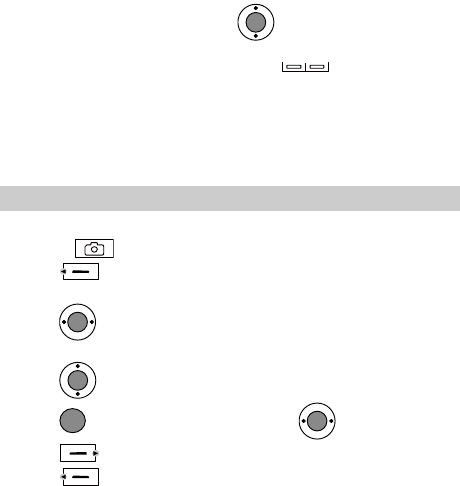
31
In preview mode, you can press to zoom in or zoom out (for
the resolutions of 1600 × 1200, the camera can be neither zoomed
in nor zoomed out). You can also press to adjust the
brightness.
In the upper left corner of the camera screen, the number 0–1000
indicates the approximate number of photo(s) that can be taken.
1000+ indicates that the number of photos that can be taken is more
than 1000.
Viewing a Photo
1. In standby mode, select Menu > Camera to access the preview mode,
or press to launch the camera.
2. Press (Options). Then select Goto Gallery to access the photo
folder.
3. Press to select a photo storage location: Phone or microSD
card.
4. Press to select a photo.
5. Press to view the photo, and then press to switch photos.
6. Press (Back) to return to the photo list.
7. Press (Options) for the following options:
z Full Screen: allows you to view the photo in full screen mode.
32
z Slide Show: allows the phone to play all photos in the current folder as
a slide show.
z Rotate: allows you to rotate the photo.
z Set as: allows you to set the photo as the wallpaper or a contact image.
z Send: allows you to select Send as MMS.
z Delete: allows you to delete the photo.
z File Info: allows you to view the name, size, resolution, and creation
time of the photo.
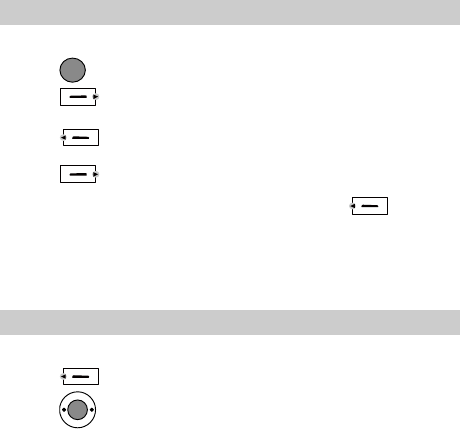
33
11 Recorder
Recording a Sound Clip
1. In standby mode, select Menu > Multimedia > Recorder.
2. Press to start recording.
3. Press (Back) to stop recording, with a prompt for confirmation
being displayed.
4. Press (Yes) to save the sound clip to Menu > Gallery > Musics
> recorder.
Press (No) to return to the previous menu.
Playing a Sound Clip
1. In standby mode, select Menu > Multimedia > Recorder.
2. Press (Options) and select Voice Folder.
3. Press to select the sound storage location, Phone or microSD
card.
z During recording of a sound clip, if you press
(Stop), the sound clip can be automatically saved to Menu >
Gallery > Musics > recorder.
z When recording a sound clip, keep the microphone of your
phone near the sound source for a better recording effect.
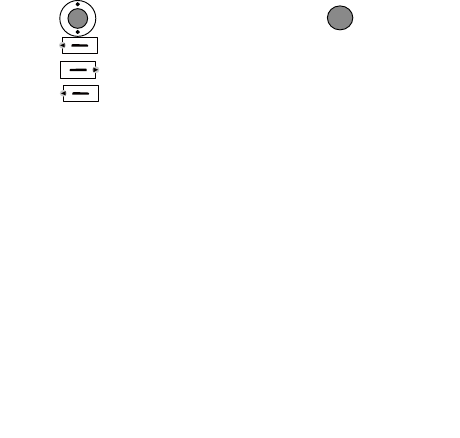
34
4. Press to select a sound clip and then press to play it, or
press (Options) and select Play.
5. Press (Minimize) to view the sound clip list.
6. Press (Options) for the following options:
z Play: allows you to play the sound clip.
z Set as: allows you to set the sound clip as the ringtone, contact tone,
SMS tone, or MMS tone.
z Send: allows you to select Send As MMS.
z Move To Memory Card/Move To Phone: allows you to move the
sound clip to the microSD card or the phone.
z Copy To Memory Card/Copy To Phone: allows you to copy the sound
clip to the microSD card or the phone.
z Delete: allows you to delete the sound clip.
z Manage Multiple: allows you to perform operations to multiple sound
clips at a time by selecting the following options: Play, Move To
Memory Card/Move To Phone, Copy To Memory Card/Copy To
Phone, and Delete.
z Rename: allows you to rename the sound clip.
z Sort: allows you to sort the sound clips according to name, size, or date.
z File Info: allows you to view the name, size, and creation time of the
sound clip.
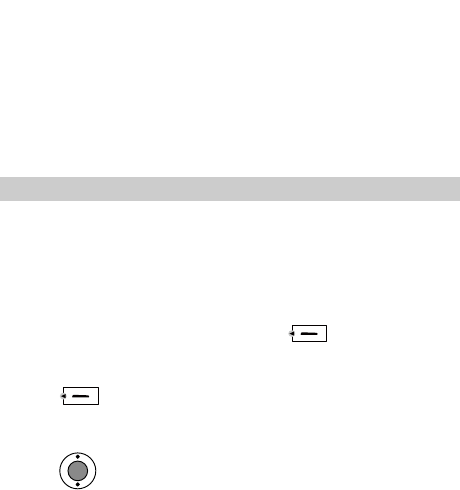
35
12 Radio
Your phone integrates a frequency modulation (FM) radio. Before listening
to the radio, insert the headset to the headset jack.
Switching On/Off the FM Radio
Switching On the FM Radio
1. Insert the headset into the headset jack properly.
2. In standby mode, select Menu > Multimedia > Radio. The phone plays
the program on the channel you listened to last time.
When you listen to the radio for the first time, because no channel
is saved on the phone, you need to press and select Auto
Tuning, Manual Tuning, Fine Tuning or Set Frequency to
search for channels.
3. Press (Options) and select Speaker On/Speaker Off to enable
or disable the speaker.
4. On the Radio screen, you can do as follows:
z Press to switch the channel.
The headset cable functions as an antenna. When listening to the
radio, do not bind or wind the headset cable. Keep the headset
cable straight for a better effect.
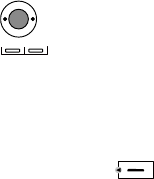
36
z Press to adjust the frequency with a precision of 0.1 MHz.
z Press to adjust the volume.
Switching Off the FM Radio
On the Radio screen, press (Option) and select Switch Off to
switch off the radio and return to the previous screen.
In standby mode or on the Radio screen, you can press the
button on the headset to switch the channel, and press and hold
the button on the headset to switch off the FM radio.
After the FM radio is switched on, when the phone returns to
the standby mode, it still plays the program and displays the
current frequency.
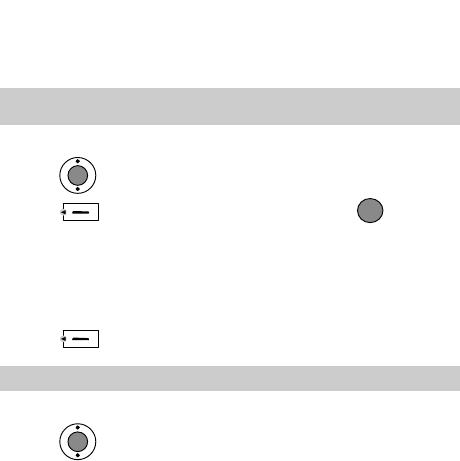
37
13 Alarm Clock
After an alarm clock is enabled, the phone notifies you at the specified
time. You can set up to five alarm clocks.
Enabling an Alarm Clock
1. Select Menu > Tools > Alarms.
2. Press to select an alarm clock.
3. Press (On) to turn on the alarm clock, or press for the
following options:
z Title: allows you to set the title of the alarm clock.
z Time: allows you to set the time.
z Cycle: allows you to set the alert cycle (days).
z Ring: allows you to set the alert tone.
4. Press (Save) to save the alarm clock.
Disabling an Alarm Clock
1. Select Menu > Tools > Alarms.
2. Press to select an alarm clock.
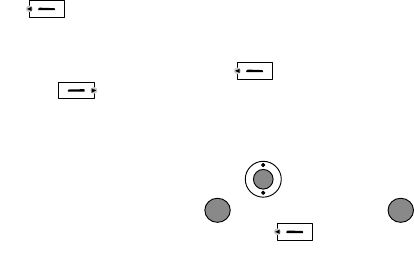
38
3. Press (Off) to disable the alarm clock.
You can also select Menu > Tools > Alarms > Cancel All to disable all
alarm clocks.
z When the alarm clock alerts, press (Stop) to stop it or
press (Snooze) to snooze it for five minutes.
z If nothing is done to the alarm clock when it alerts, it stops
temporarily after 45-second ringing and alerts again five minutes
later. The alarm clock alerts five times before it stops thoroughly.
z If you select Cycle > Custom, press to scroll from
Sunday to Saturday and press to select the days; press
again to deselect the days, and then press (OK) to
confirm.
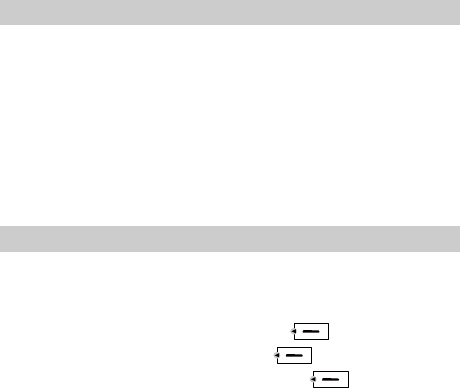
39
14 Security
Enabling/Disabling the Phone Lock
The phone lock protects your phone from unauthorized use. The phone
lock function is not enabled when you purchase the phone. You can change
the default phone lock code 1234 to any numeric string of 4 to 8 digits.
1. Select Menu > Settings > Security Settings > Phone Lock.
2. Select one of the following phone lock modes:
z Immediate: Lock the phone immediately.
z Power On: Enable the phone lock when the phone is powered on next
time.
z Off: Disable your phone lock.
Changing the Phone Lock Code
Do remember your phone lock code. If you forget it, contact your local
dealer.
1. Select Menu > Settings > Security Settings > Change Phone Code.
2. Enter the correct phone lock code and press (OK).
3. Enter the new phone lock code and press (OK).
4. Enter the new phone lock code again and press (OK).
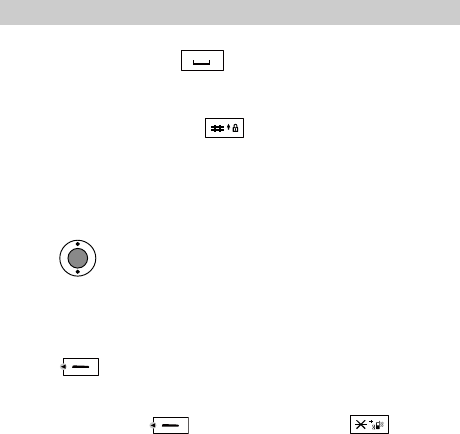
40
Locking the Keypad
When the keypad is locked, you can still answer incoming calls or make
emergency calls by pressing .
Manually Locking the Keypad
In standby mode, press and hold to lock the keypad.
Automatically Locking the Keypad
If the auto keyguard function is enabled, after the phone has been idle for a
preset period of time in standby mode, the keypad is locked automatically.
1. Select Menu > Settings > Phone Settings > Auto Keyguard.
2. Press for the following options:
z Off: Disable the auto keyguard function.
z 15 Seconds, 30 Seconds, or 1 Minute: When the phone has been idle
for the selected time in standby mode, the keypad is locked
automatically.
3. Press (Select) to save the settings.
Unlocking the Keypad
In standby mode, press (Unlock) and then press to unlock
the keypad.

41
15 USB Connection
After connecting your phone to a PC by using a USB cable, you can use
the functions such as data synchronization and dial-up network access.
Network Access Through a Dial-Up
Connection
After you connect your phone to a PC, the phone can be used as a
high-speed modem. To set up a dial-up connection and access the network,
do as follows:
1. Ensure that the UIM card used on your phone supports the network
access function.
2. Ensure that your phone is powered on and is in a service area.
3. Connect your phone to the PC with a USB cable.
4. Install the driver stored on the CD delivered with your phone on the PC.
5. In the Computer Management window of the PC, click Device
Manager. Ensure that your phone is listed under Modems.
6. On the PC, choose Start > Control Panel > Network and Internet
Connections. Click Create a connection to the network at your
workplace. Then create a connection by using the New Connection
Wizard. During the process of creating the connection, set Phone
number to #777.
7. Access the network by using the dial-up connection.

42
If the data service icon appears on the phone screen and if appears in
the notification area of the PC, it indicates that the dial-up connection is set
up and that you can access the network.
z The data service needs to be supported by the network of your
operator. Therefore, before you use this service, contact your
network operator to check whether this service is supported.
z When setting up the dial-up connection, you need to enter the
user name and the password. For details about the user name
and the password, contact your network operator.
USB Flash Drive Mode
1. Connect your phone to a PC.
2. On the computer, your phone can be used as a USB flash drive and you
can modify the files stored on the microSD card.
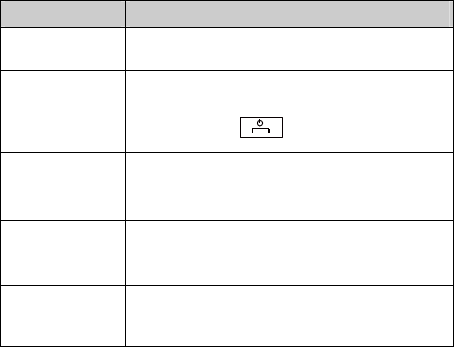
43
16 Troubleshooting
If you encounter any problem when using your phone, try to solve the
problem according to the following table. If the problem still occurs,
contact the service provider or the dealer.
Problem Ensure that…
The battery cannot
be charged. The charger is properly connected to your phone and
the power socket.
The phone cannot
be powered on.
z The battery power is enough.
z The battery is properly installed.
z Press and hold .
You cannot make
a call except an
emergency call.
z The phone number is correct.
z You are in the network service area.
z You do not enable the call restriction function.
Bad call quality.
z The signal strength is strong enough.
z If you are staying indoors, move near to a
window.
During a call, the
other side cannot
hear your voice. The microphone is not covered.

44
Problem Ensure that…
The signal strength
is not strong
enough or your
phone is often off
line.
z The antenna is in good condition.
z Move near to a place with strong signal strength.
The phone
displays "No
service found",
"Service
unavailable" or
"Network
problem".
z You are not in an area with weak magnetic field
(in a tunnel or surrounded by buildings). If so,
move to another area and try again.
z Do not visit the service option without
authorization from your service provider.
Voice services are
not available when
you use a headset.
z Your headset has a microphone and supports
voice functions.
z Your headset is properly connected to the phone.
45
17 Warnings and Precautions
This section contains important information pertaining to the operating
instructions of your device. It also contains information about how to use
the device safely. Read this information carefully before using your device.
Electronic Device
Power off your device if using the device is prohibited. Do not use the
device when using the device causes danger or interference with electronic
devices.
Medical Device
z Follow rules and regulations set forth by hospitals and health care
facilities. Do not use your device when using the device is prohibited.
z Pacemaker manufacturers recommend that a minimum distance of 15
cm be maintained between a device and a pacemaker to prevent
potential interference with the pacemaker. If you are using a pacemaker,
use the device on the opposite side of the pacemaker and do not carry
the device in your front pocket.
Potentially Explosive Atmosphere
Power off your device in any area with a potentially explosive atmosphere,
and comply with all signs and instructions. Areas that may have potentially
explosive atmospheres include the areas where you would normally be
advised to turn off your vehicle engine. Triggering of sparks in such areas
could cause an explosion or a fire, resulting in bodily injuries or even
deaths. Do not power on your device at refueling points such as service
stations. Comply with restrictions on the use of radio equipment in fuel
depots, storage, and distribution areas, and chemical plants. In addition,
adhere to restrictions in areas where blasting operations are in progress.
46
Before using the device, watch out for areas that have potentially explosive
atmospheres that are often, but not always, clearly marked. Such locations
include areas below the deck on boats, chemical transfer or storage
facilities, and areas where the air contains chemicals or particles such as
grain, dust, or metal powders. Ask the manufacturers of vehicles using
liquefied petroleum gas (such as propane or butane) whether this device
can be safely used in their vicinity.
Traffic Security
Observe local laws and regulations while using the device. In addition, if
using the device while driving a vehicle, comply with the following
guidelines:
z Concentrate on driving. Your first responsibility is to drive safely.
z Do not talk on the device while driving. Use hands-free accessories.
z When you have to make or answer a call, park the vehicle at the road
side before using your device.
z RF signals may affect electronic systems of motor vehicles. For more
information, consult the vehicle manufacturer.
z In a motor vehicle, do not place the device over the air bag or in the air
bag deployment area. Otherwise, the device may hurt you owing to the
strong force when the air bag inflates.
z Do not use your device while flying in an aircraft. Power off your
device before boarding an aircraft. Using wireless devices in an aircraft
may cause danger to the operation of the aircraft and disrupt the
wireless telephone network. It may also be considered illegal.
Operating Environment
z Do not use or charge the device in dusty, damp, and dirty places or
places with magnetic fields. Otherwise, it may result in a malfunction
of the circuit.
47
z The device complies with the RF specifications when the device is used
near your ear or at a distance of 1.5 cm from your body. Ensure that the
device accessories such as a device case and a device holster are not
composed of metal components. Keep your device 1.5 cm away from
your body to meet the requirement earlier mentioned.
On a stormy day with thunder, do not use your device when it is being
charged, to prevent any danger caused by lightning.
z When you are on a call, do not touch the antenna. Touching the antenna
affects the call quality and results in increase in power consumption. As
a result, the talk time and the standby time are reduced.
z While using the device, observe the local laws and regulations, and
respect others' privacy and legal rights.
z Keep the ambient temperature between 0°C and 45°C while the device
is being charged. Keep the ambient temperature between 0°C to 55°C
for using the device powered by a battery.
Prevention of Hearing Damage
Using a headset at high volume can damage your hearing. To reduce the
risk of damage to hearing, lower the headset volume to a safe and
comfortable level.
Safety of Children
Comply with all precautions with regard to children's safety. Letting the
child play with your device or its accessories, which may include parts that
can be detached from the device, may be dangerous, as it may present a
choking hazard. Ensure that small children are kept away from the device
and accessories.
Accessories
Use the accessories delivered only by the manufacturer. Using accessories
of other manufacturers or vendors with this device model may invalidate
48
any approval or warranty applicable to the device, result in the
non-operation of the device, and cause danger.
Battery and Charger
z Unplug the charger from the electrical plug and the device when not in
use.
z The battery can be charged and discharged hundreds of times before it
eventually wears out. When the standby time and the talk time are
shorter than the normal time, replace the battery.
z Use the AC power supply defined in the specifications of the charger.
An improper power voltage may cause a fire or a malfunction of the
charger.
z Do not connect two poles of the battery with conductors, such as metal
materials, keys, or jewelries. Otherwise, the battery may be
short-circuited and may cause injuries and burns on your body.
z Do not disassemble the battery or solder the battery poles. Otherwise, it
may lead to electrolyte leakage, overheating, fire, or explosion.
z If battery electrolyte leaks out, ensure that the electrolyte does not
touch your skin and eyes. When the electrolyte touches your skin or
splashes into your eyes, wash your eyes with clean water immediately
and consult a doctor.
z If there is a case of battery deformation, color change, or abnormal
heating while you charge or store the battery, remove the battery
immediately and stop using it. Otherwise, it may lead to battery leakage,
overheating, explosion, or fire.
z If the power cable is damaged (for example, the cord is exposed or
broken), or the plug loosens, stop using the cable at once. Otherwise, it
may lead to an electric shock, a short circuit of the charger, or a fire.
z Do not dispose of batteries in fire as they may explode. Batteries may
also explode if damaged.
49
Cleaning and Maintenance
z The device, battery, and charger are not water-resistant. Keep them dry.
Protect the device, battery, and charger from water or vapor. Do not
touch the device or the charger with a wet hand. Otherwise, it may lead
to a short circuit, a malfunction of the device, and an electric shock to
the user.
z Do not place your device, battery, and charger in places where they can
get damaged because of collision. Otherwise, it may lead to battery
leakage, device malfunction, overheating, fire, or explosion.
z Do not place magnetic storage media such as magnetic cards and floppy
disks near the device. Radiation from the device may erase the
information stored on them.
z Do not leave your device, battery, and charger in a place with an
extreme high or low temperature. Otherwise, they may not function
properly and may lead to a fire or an explosion. When the temperature
is lower than 0°C, performance of the battery is affected.
z Do not place sharp metal objects such as pins near the earpiece. The
earpiece may attract these objects and hurt you when you are using the
device.
z Before you clean or maintain the device, power off the device and
disconnect it from the charger.
z Do not use any chemical detergent, powder, or other chemical agents
(such as alcohol and benzene) to clean the device and the charger.
Otherwise, parts of the device may be damaged or a fire can be caused.
You can clean the device and the charger with a piece of damp and soft
antistatic cloth.
z Do not dismantle the device or accessories. Otherwise, the warranty on
the device and accessories is invalid and the manufacturer is not liable
to pay for the damage.
50
Emergency Call
You can use your device for emergency calls in the service area. The
connection, however, cannot be guaranteed in all conditions. You should
not rely solely on the device for essential communications.
Certification Information (SAR)
This device meets guidelines for exposure to radio waves.
Your device is a low-power radio transmitter and receiver. As
recommended by international guidelines, the device is designed not to
exceed the limits for exposure to radio waves. These guidelines were
developed by the independent scientific organization International
Commission on Non-Ionizing Radiation Protection (ICNIRP) and include
safety measures designed to ensure safety for all users, regardless of age
and health.
The Specific Absorption Rate (SAR) is the unit of measurement for the
amount of radio frequency energy absorbed by the body when using a
device. The SAR value is determined at the highest certified power level in
laboratory conditions, but the actual SAR level of the device when being
operated can be well below the value. This is because the device is
designed to use the minimum power required to reach the network.
The SAR limit adopted by USA and Canada is 1.6 watts/kilogram (W/kg)
averaged over one gram of tissue. The highest SAR value reported to the
FCC and IC for this device type when tested for use at the ear is 0.863
W/kg, and when properly worn on the body is 1.06 W/kg.
FCC Statement
This equipment has been tested and found to comply with the limits for a
Class B digital device, pursuant to Part 15 of the FCC Rules. These limits
are designed to provide reasonable protection against harmful interference
in a residential installation. This equipment generates, uses and can radiate
radio frequency energy and, if not installed and used in accordance with
51
the instructions, may cause harmful interference to radio communications.
However,there is no guarantee that interference will not occur in a
particular installation.If this equipment does cause harmful interference to
radio or television reception,which can be determined by turning the
equipment off and on, the user is encouraged to try to correct the
interference by one or more of the following measures:
--Reorient or relocate the receiving antenna.
--Increase the separation between the equipment and receiver.
-- Connect the equipment into an outlet on a circuit different from that to
which the receiver is connected.
-- Consult the dealer or an experienced radio/TV technician for help.
This device complies with Part 15 of the FCC Rules. Operation is subject
to the following two conditions: (1) this device may not cause harmful
interference, and (2) this device must accept any interference received,
including interference that may cause undesired operation.
Warning: Changes or modifications made to this device not expressly
approved by Huawei Technologies Co., Ltd. may void the FCC
authorization to operate this device.
Version: V100R001Cxx_01 Part number: 31010xxx